Flowers Grown from Fish Poop and Mickey-Shaped Cucumbers: The Magic of Disney World’s Very Own Farm
Here's a behind-the-seeds look at the futuristic farm attraction hidden in plain sight at EPCOT
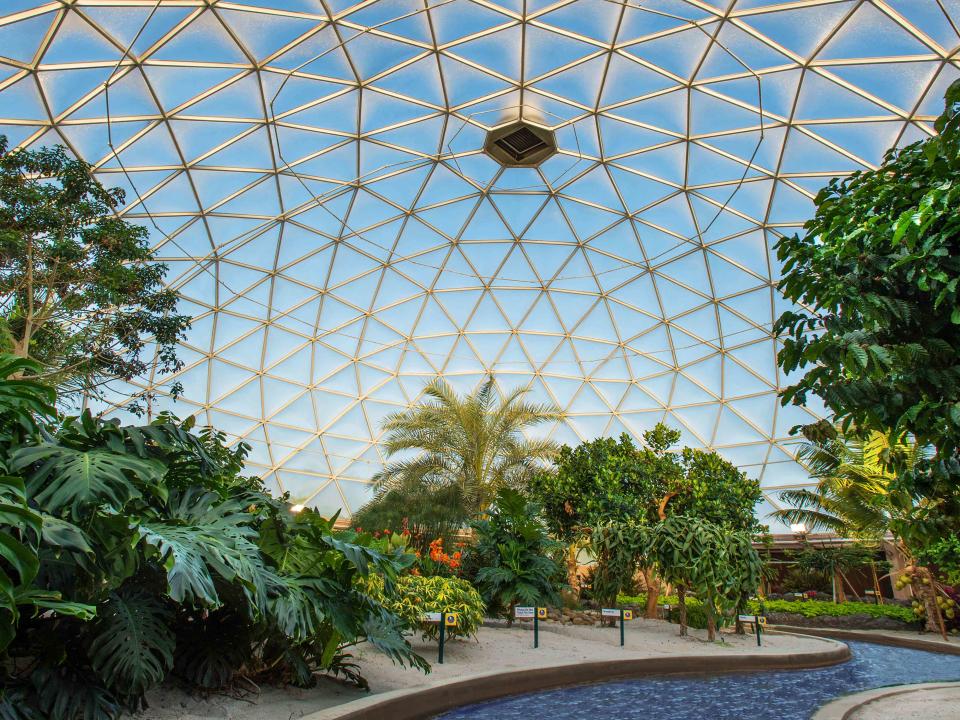
Walt Disney World Resort
While other parks at Walt Disney World are all about fantasy, EPCOT is home to a fantastic little farm of the future. It’s one of the best-kept secrets at Walt Disney World: It’s where cucumbers, pumpkins, and giant lemons are literally grown in plastic molds that turn them into Mickey’s famous silhouette. It’s also where fish poop fertilizes the growth of thousands of edible flowers that end up on guest plates throughout the resort. It’s a fun peek into eco-minded farming (not to mention the earliest days of EPCOT), and it’s 100% tourable.
“We’re an original attraction,” says Laura Kleiss, Disney horticulturist and student program manager at Living with the Land, EPCOT’s one-acre, iconic glass domed attraction, where guests cruise through futuristic, vertical gardens on boats. This is OG EPCOT: These greenhouses were already thriving when EPCOT opened its gates in 1982 and are one of the park’s few ties left to its initial concept.
Everything grown here—30-40 tons of produce annually featuring more than 150 food crops from around the world—is edible in some form or fashion (save for one pet Mimosa pudica plant affectionately known as Stanley).
While those 30 tons might sound like a lot, they’re a drop in the bucket of Disney World Resort’s food needs–about one percent. What’s most worthwhile about The Land is how the produce is grown. The farming here is 100% hydroponic, meaning a nutrient-rich solution of water and nutrients mixed together is given directly to the roots of the plants instead of relying on nutrients in soil. With this technique, plants typically grow two to three times faster than traditional gardening because they get more nutrients. And more than 40 years later, the attraction’s pioneering conveyor systems and column pots of plants seemingly suspended in air still wow guests.
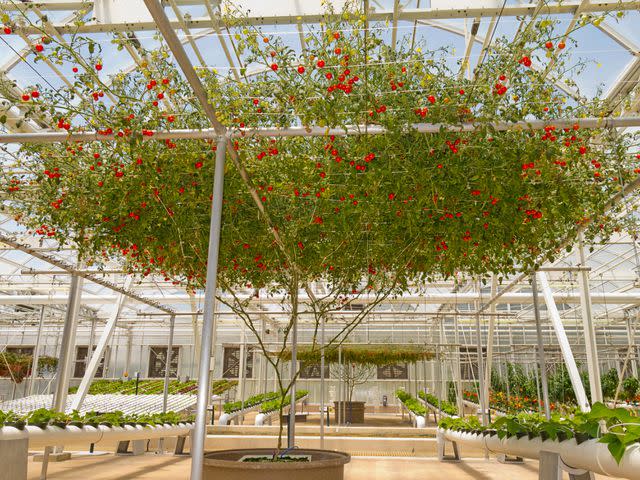
Alamy
Mickey-Shaped Cucumbers, Pumpkins, and Lemons
Kleiss is part of a team of 12 full-time plant scientists at The Land (the name of the pavilion home of Living with the Land), and you can thank her for the surge of Mickey-shaped produce in the last 20 years. The special plants are grown in super-stiff plastic (similar to airplane glass) molds that can withstand a lot of pressure. But these molds were almost forgotten.
“I was helping clean out a trailer with another fellow intern and we found them,” she says. “I guess they’d been put away from a few years earlier and since then they’ve really blown up in how popular they are. We started putting them back on cucumbers and pumpkins. It’s amazing how fast they grow. Cucumbers will grow into that mold in less than a week. Pumpkins will start about the size of a softball and will grow into that Mickey shape in about two weeks.”
Kleiss says they’ve also grown Mickey-shaped lemons. Giant Mickey-shaped lemons. “We’ve done Nine Pound Lemons,” she says. “It’s a variety of lemon that was found here in Florida originally in a backyard. They get over nine pounds! The biggest one we grew was 15 pounds.”
Beyond the mouse magic, this is a busy enterprise. The Land provides tomatoes, cucumbers, eggplant, and lettuce for Garden Grill, the iconic rotating restaurant at the pavilion. Coral Reef Restaurant, Sunshine Seasons, and the Canada and France pavilions at EPCOT all use The Land’s produce, as well as select fine dining locations across Disney World, from Tiffins in Animal Kingdom to Flying Fish to Disney’s Riviera Resort. It’s not uncommon for a chef to visit the tropical greenhouse and ask to try out a coffee bean.
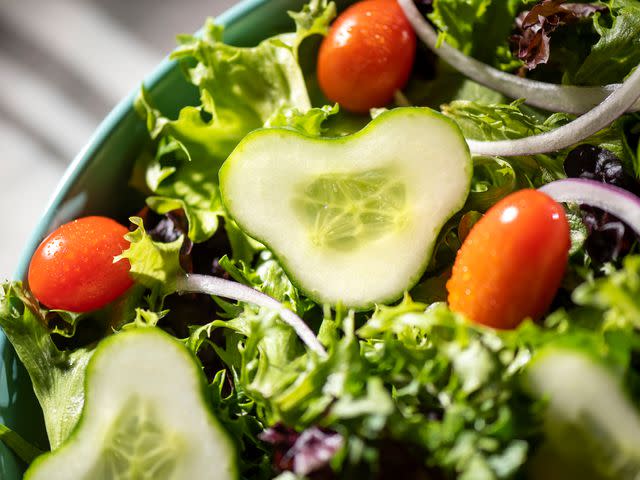
Walt Disney World Resort
A Lot of Produce from a Little Farm
For just one acre, the scale is grand. And Kleiss says it’s all possible because of vertical gardening.
“When you’re in a greenhouse you have to use all the space available to you,” she says. “Tomatoes are grown on strings in a vertical spiral so produce ready to be harvested is always closest to the bottom. The lettuce is spinning to get even light on each head. They call it the salad spinners.”
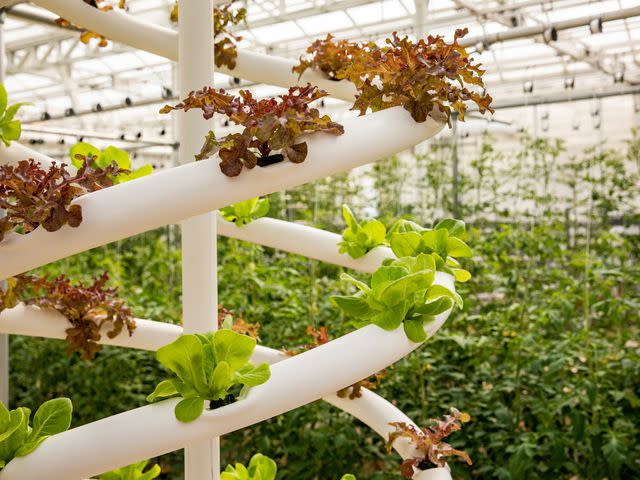
Walt Disney World Resort
Every other day, cucumbers are harvested for the restaurants. “We can usually harvest a few hundred pounds every other day,” Kleiss says. “It’s a testament to how fast and lush these systems can grow.”
And these systems have some serious bragging rights. The pavilion holds the world record for the most produce harvested off of one plant.
“We grew one [tomato plant] back in 2016,” she says. “It was 16 and a half months old and just over 32,000 fruit, which is about one thousand pounds of little tiny cherry tomatoes. It was the entire trellis size so I think we also hold the world record for the largest tomato plant. And that was like 32 feet by about five feet wide.”
The pavilion is also a certified Zero Waste Facility: 99 percent of waste is diverted from landfills. Any extra produce or fruit found with aphids on it goes to Disney’s Animal Kingdom park for animal enrichment activities. And no material is wasted. Not even fish poop.
Growing Flowers from Fish Poop
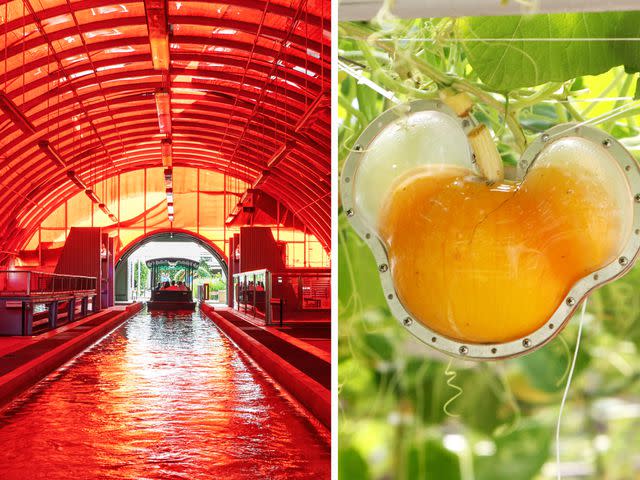
Alamy/Getty Images
Look for the Willy Wonka-esque tunnel that connects the pavilion’s two main greenhouses. Here’s where Disney collects detritus (fish poop) to create something incredibly beautiful: dainty, edible flowers. It’s one piece in the symbiotic circle of life for the garden’s aquaculture center where hybrid tilapia, bass, and freshwater shrimp are farmed for some of the theme park’s restaurants. The flowers grow up to top desserts and drinks–even stocking an an edible terrarium with matcha moss. There’s flower farming, and then there’s Disney flower farming.
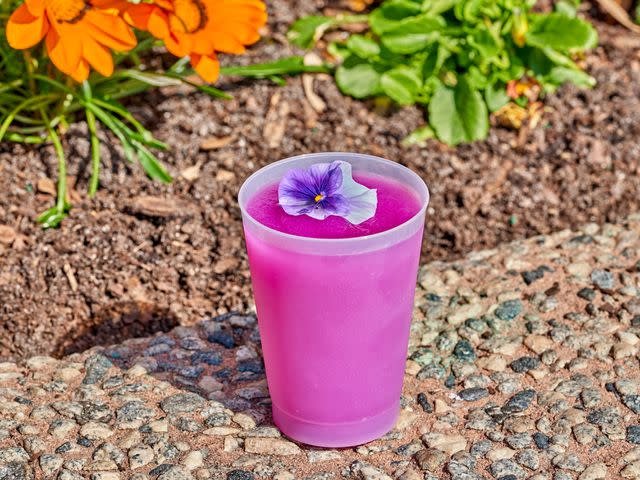
Allrecipes/Suzanne Clements
“We have an integrated aquaculture system here,” Kleiss says. “The fish live in water. They do their thing in there. Nitrogen is actually a toxin for them so it needs to be filtered out anyway, but what’s great about it is that nitrogen source goes right up to the plants and the plants take it out as nitrates and then the water spills back into the tank and it’s healthy for them. So it’s a great circular, closed-loop system where nothing gets wasted.”
Right now, a dainty little edible flower called a dianthus is thriving atop the tanks, but other varieties like marigolds and violas have grown from the nutritional blessings of fish poop. “We grow thousands of edible flowers [here],” she says. “Last year we harvested more than 400 pounds of flowers for the restaurants. That’s more than 150,000 blossoms!”
It’s turning trash (or fish poop) into edible treasure.
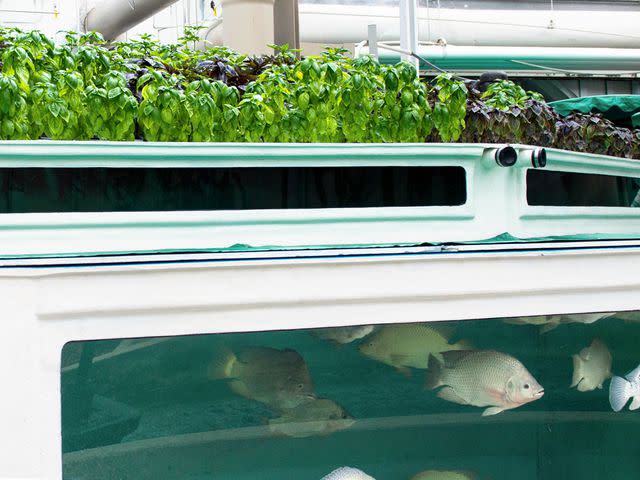
Alamy
From massive Mickey-shaped lemons to fish poop flowers, Living with the Land can be a fun lesson in the power of sustainable growing. “What’s so neat about this greenhouse is that thousands of guests see what we do on a daily basis,” says Kleiss. “A farm will only see a handful of people in its lifetime. We’re able to showcase sustainable agriculture and a diversity of plants from around the world every single day.”
The next time you visit EPCOT, carve out an hour for the Behind the Seeds tour at Living with the Land. It’s $39-45 per person and you can taste one of Disney’s seedless cucumbers as well as feed the fish that are feeding the flowers. Which will no doubt end up on your Insta feed.
Read the original article on All Recipes.

